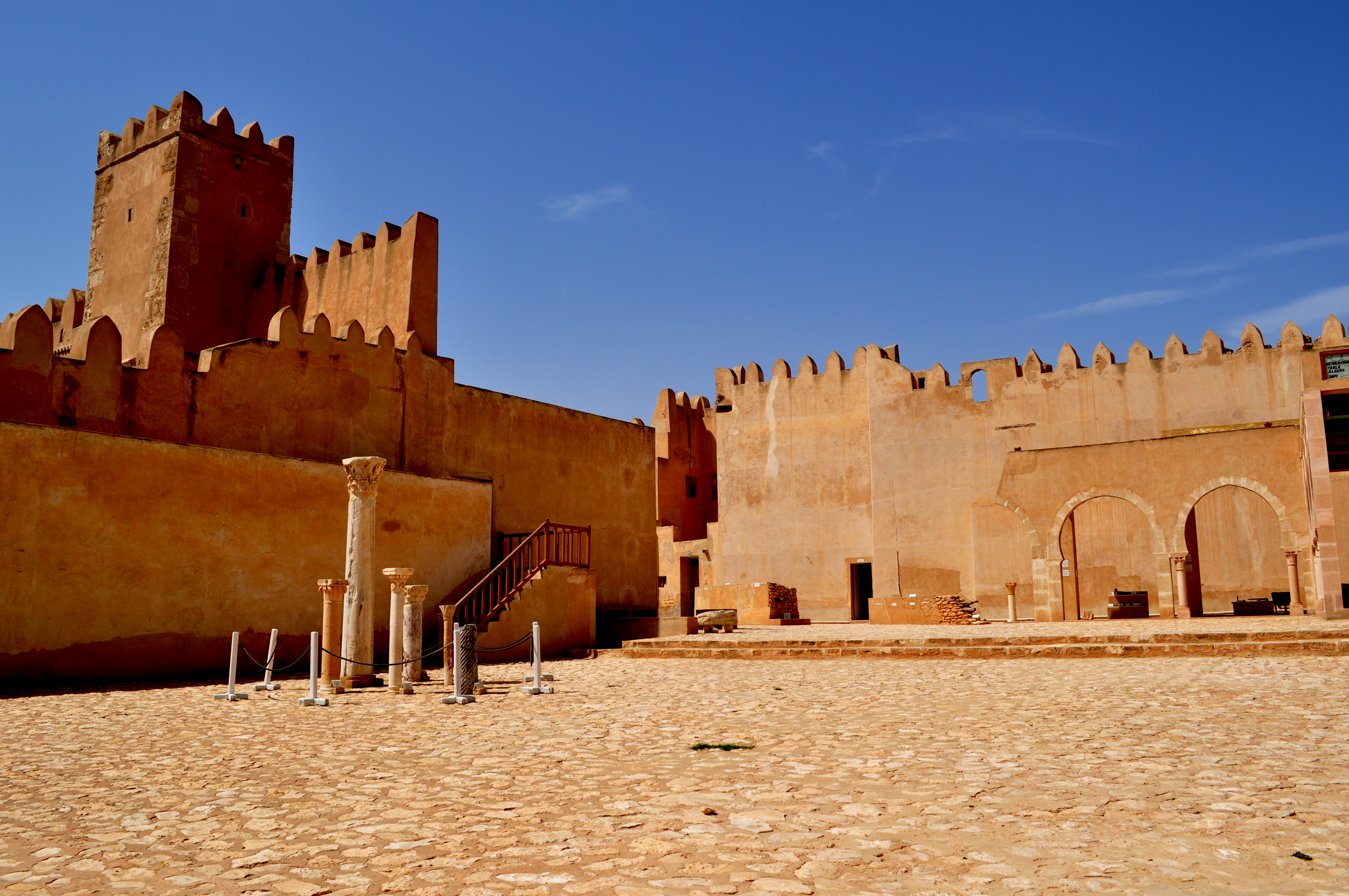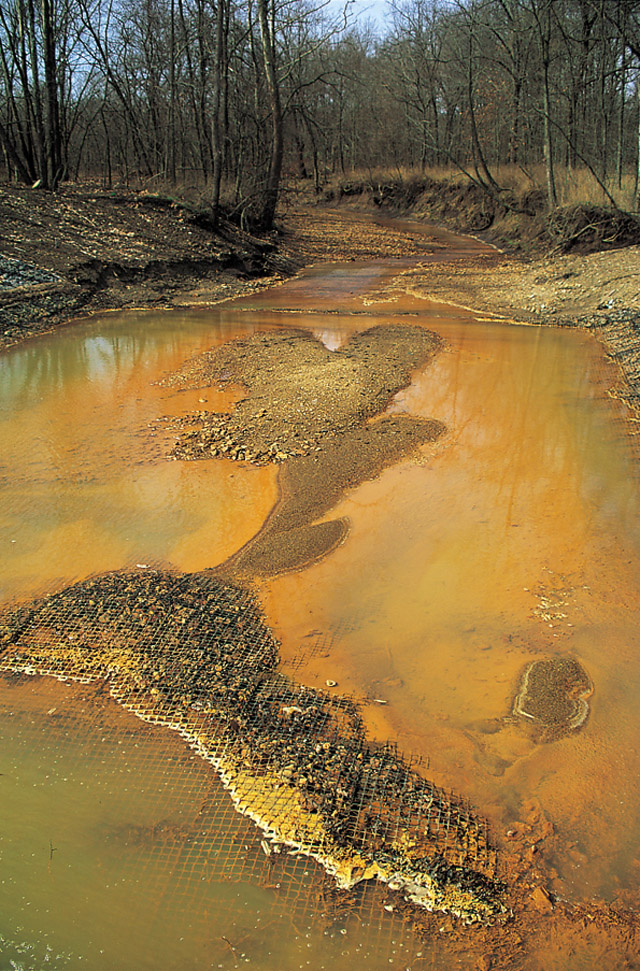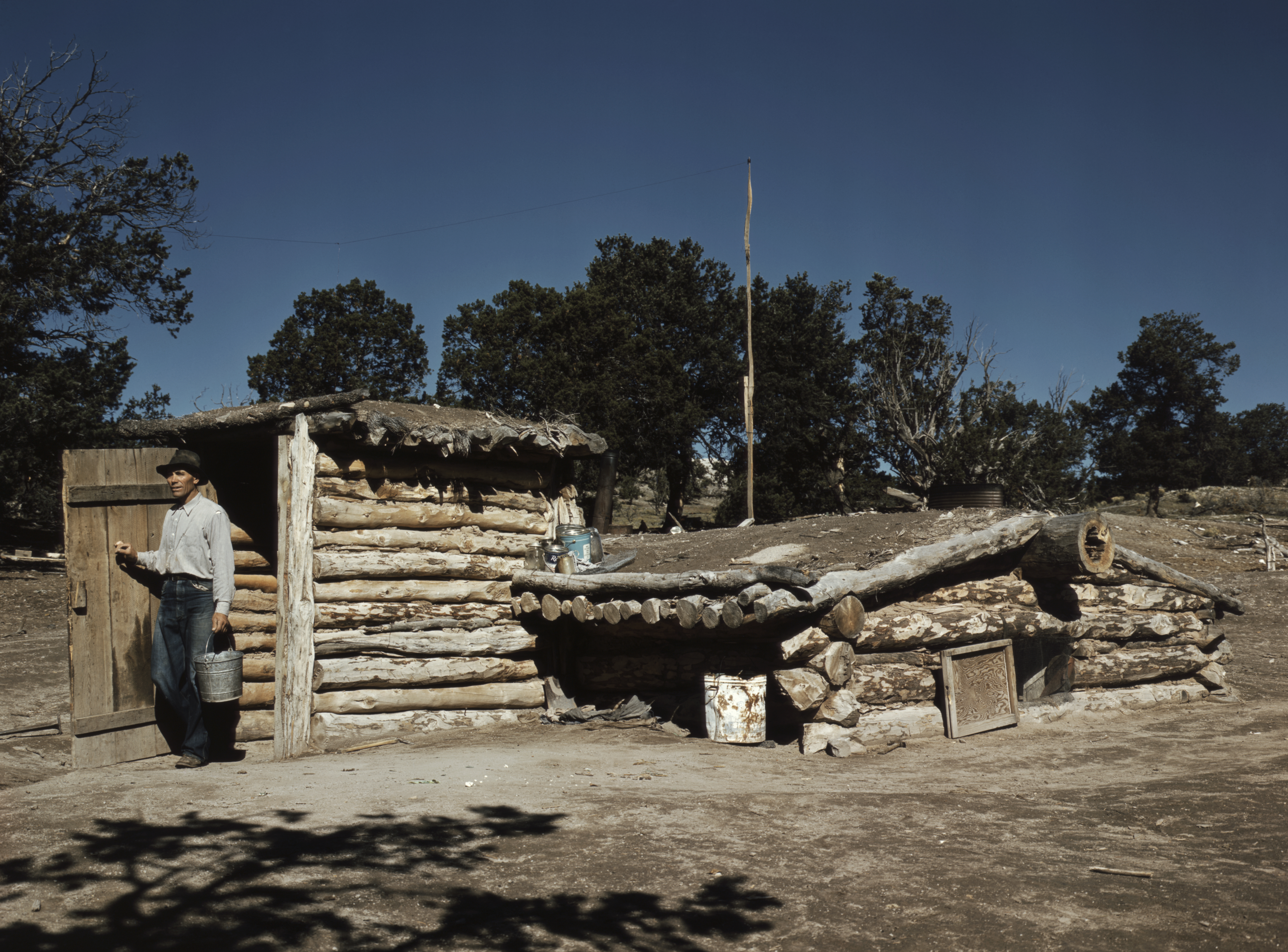|
Jebel Dahar
Jebel Dahar () is a low sandstone mountain chain of the Médenine Governorate of Tunisia. Geography The chain is oriented on a north-south axis, bisecting the south of Tunisia. At the northern end, it meets the east-west-oriented Jebel Tebaga. The Sahara lies to the south and west of it, and the fertile Jeffara plain to the east. It runs for over south from Matmata, Tunisia, Matmata, curving gently to the east to sink beneath the dunes of the Grand Erg Oriental near Tataouine. Foothills extend for a further to the border with Libya, beyond which the chain continues as the Nafusa Mountains. The peaks of Jebel Dahar are lower than those of the Dorsale and Atlas Mountains, Atlas chains. The tallest is Djebel Zemertène, at . However, they are imposing in form: most are steep-sided mesas, separated by either narrow ravines or wide valleys. Climate and vegetation The local climate is extremely arid with frequent wind. The temperature often falls below at night during the winter, a ... [...More Info...] [...Related Items...] OR: [Wikipedia] [Google] [Baidu] |
Médenine Governorate
Medenine ( '; ) is one of the 24 Governorates of Tunisia, governorates (provinces) of Tunisia, it had a population of 537,255 (2024 census) situated in the south-east, it includes Djerba, djerba island and borders Libya to the east. The capital is Medenine, Mednine. Geography The governorate encompasses the south-easternmost coastal strip, totalling 9167 km2 and had a population of 479,520 at the 2014 census. The capital is Medenine. The governorate includes the country's largest island, Djerba, which is connected by a ferry boat and has over a third of the total population of the governate and its own airport. The area is generally lowlands. It extends in two projections at its extreme ends a maximum of 60 km from the coast, otherwise the neighbouring division of Tataouine Governorate, Tataouine is 30 km from the coast. The northern projection abuts Kebili Governorate and includes part of a long escarpment which extends from the south of Gabes Governorate (adjoin ... [...More Info...] [...Related Items...] OR: [Wikipedia] [Google] [Baidu] |
Berber People
Berbers, or the Berber peoples, also known as Amazigh or Imazighen, are a diverse grouping of distinct ethnic groups indigenous to North Africa who predate the arrival of Arabs in the Maghreb. Their main connections are identified by their usage of Berber languages, most of them mutually unintelligible, which are part of the Afroasiatic language family. They are indigenous to the Maghreb region of North Africa, where they live in scattered communities across parts of Morocco, Algeria, Libya, and to a lesser extent Tunisia, Mauritania, northern Mali and northern Niger. Smaller Berber communities are also found in Burkina Faso and Egypt's Siwa Oasis. Descended from Stone Age tribes of North Africa, accounts of the Imazighen were first mentioned in Ancient Egyptian writings. From about 2000 BC, Berber languages spread westward from the Nile Valley across the northern Sahara into the Maghreb. A series of Berber peoples such as the Mauri, Masaesyli, Massyli, Musulamii, Ga ... [...More Info...] [...Related Items...] OR: [Wikipedia] [Google] [Baidu] |
Ksar Ouled Soltane
Ksar Ouled Soltane () is a fortified granary, or ksar, located in the Tataouine district in southern Tunisia. The ksar is spread out over two courtyards, each of which has a perimeter of multi-story vaulted granary cellars, or ghorfas. Like other ksour (plural of ksar) built by Berber communities Ksar Ouled Soltane, is located on a hilltop, to help protect it from raiding parties in previous centuries. Ksar Ouled Soltane is now a tourist destination, with visitors coming to see its well-preserved granary vaults. It was also featured in the film '' Star Wars: Episode I – The Phantom Menace'' in some of the scenes used to represent the slave quarters of Mos Espa, where the character Anakin Skywalker Darth Vader () is a fictional character in the ''Star Wars'' franchise. He was first introduced in the Star Wars original trilogy, original film trilogy as the primary Antagonist, antagonist and one of the leaders of the Galactic Empire (Star W ... lived as a boy. [...More Info...] [...Related Items...] OR: [Wikipedia] [Google] [Baidu] |
Ksar Hadada
Ksar Hadada (), sometimes known as Ksar Hedada, is a village in southeastern Tunisia. It is well known as being a filming location for 1999 film ''Star Wars: Episode I – The Phantom Menace''. The population at the 2004 census was 1298, and 1142 in 2014. Geography Ksar Hadada is surrounded by a mountain range. The village is also home to a valley between 25 and 50 meters deep called Gattar. Several fossils have been found in and around the village. Climate The climate is semi-arid, as the Sahara is only fifty kilometers away, and rain is rare but abundant when it does occur. Temperatures can reach 48°C during the day in summer and go down to 0°C at night in winter. Architecture and education A mosque was built in the 1950s. There are also two cafés, a post office, a library, a football stadium and a dozen shops. The village has a kindergarten and a primary school. On the other hand, the ksar does not have a middle or high school, but there are relationships established ... [...More Info...] [...Related Items...] OR: [Wikipedia] [Google] [Baidu] |
Mosque
A mosque ( ), also called a masjid ( ), is a place of worship for Muslims. The term usually refers to a covered building, but can be any place where Salah, Islamic prayers are performed; such as an outdoor courtyard. Originally, mosques were simple places of prayer for the early Muslims, and may have been open spaces rather than elaborate buildings. In the first stage of Islamic architecture (650–750 CE), early mosques comprised open and closed covered spaces enclosed by walls, often with minarets, from which the Adhan, Islamic call to prayer was issued on a daily basis. It is typical of mosque buildings to have a special ornamental niche (a ''mihrab'') set into the wall in the direction of the city of Mecca (the ''qibla''), which Muslims must face during prayer, as well as a facility for ritual cleansing (''wudu''). The pulpit (''minbar''), from which public sermons (''khutbah'') are delivered on the event of Friday prayer, was, in earlier times, characteristic of the central ... [...More Info...] [...Related Items...] OR: [Wikipedia] [Google] [Baidu] |
Douiret
Douiret (Berber: Eddwirat or igherman, ) is a ruined Berber village in the Tataouine district in southern Tunisia. Located on a hilltop near a modern village of the same name, Douiret was a fortified granary, or ksar (plural ''ksour''.) Like other ksour created by North African Berber communities, Douiret was built on a hilltop to help protect it from raiding parties. Douiret is a regular stop on southern Tunisia's ksar Ksar or qṣar (), in plural ksour or qsour (), is a type of fortified village in North Africa, usually found in the regions predominantly or traditionally inhabited by Berbers (Amazigh). The equivalent Berber languages, Berber term used is ' ( ... trail, along with the villages of Chenini, Ksar Ouled Soltane and Ksar Hadada. The old village of Douiret is located 22 km southwest of Tataouine in a rugged mountainous region. The old village transformed into ruins is surmounted by its citadel or ksar overlooking troglodyte houses dug in the mountain and ... [...More Info...] [...Related Items...] OR: [Wikipedia] [Google] [Baidu] |
Chenini
Chenini () is a ruined Berber village in the Tataouine district in southern Tunisia. Located on a hilltop near a modern village of the same name, Chenini was a fortified granary, or ksar (plural ''ksour''). History Like other ksour created by North African Berber communities, Chenini was built on a hilltop - in this instance, between two hilltop ridges - to help protect it from raiding parties. The oldest structures on the hillside date back to the 12th century; some of the buildings are still used to store grain for the villagers living in the valley below. Modern times Chenini and the surrounding Tataouine district are also associated with the Star Wars film series. Many scenes for the movies were filmed in the area; one of the moons of the home planet of Luke Skywalker was named Chenini. As of 2023, Chenini was inhabited by around 500 Berber farmers and herders who live in caves carved out of rock, many of which have been modernized. The village is facing a demographic ... [...More Info...] [...Related Items...] OR: [Wikipedia] [Google] [Baidu] |
Kasbah
A kasbah (, also ; , , Maghrebi Arabic: ), also spelled qasbah, qasba, qasaba, or casbah, is a fortress, most commonly the citadel or fortified quarter of a city. It is also equivalent to the term in Spanish (), which is derived from the same Arabic word. By extension, the term can also refer to a medina quarter, particularly in Algeria. In various languages, the Arabic word, or local words borrowed from the Arabic word, can also refer to a settlement, a fort, a watchtower, or a blockhouse. Citadel or fortress The term ''qasaba'' was historically flexible but it essentially denotes a fortress, commonly a citadel that protects a city or settlement area, or that serves as the administrative center. A kasbah citadel typically housed the military garrison and other privileged buildings such as a palace, along with other amenities such as a mosque and a hammam (bathhouse). Some kasbahs are built in a strategic elevated position overlooking the city, like the Kasbah of the O ... [...More Info...] [...Related Items...] OR: [Wikipedia] [Google] [Baidu] |
Ksar Ouled Soltane 01
Ksar or qṣar (), in plural ksour or qsour (), is a type of fortified village in North Africa, usually found in the regions predominantly or traditionally inhabited by Berbers (Amazigh). The equivalent Berber term used is ' (singular) or (plural). Etymology The Arabic ''qaṣr'' () was probably borrowed from the Latin word . Architecture Ksour in the Maghreb typically consist of attached houses, often having a fortified communal granary like those in Algeria, or the ghorfa and agadir types known in Tunisia and Morocco respectively, beside other structures like a mosque, hammam, oven, and shops. Ksur or igherman are widespread among the oasis populations of North Africa. Ksars are sometimes situated in mountain locations to make defense easier; they often are entirely within a single, continuous wall. The building material of the entire structure usually is adobe, or cut stone and adobe. The idea of the ksar as a granary is a confused notion of two things: the granary ... [...More Info...] [...Related Items...] OR: [Wikipedia] [Google] [Baidu] |
Tailings
In mining, tailings or tails are the materials left over after the process of separating the valuable fraction from the uneconomic fraction (gangue) of an ore. Tailings are different from overburden, which is the waste rock or other material that overlies an ore or mineral body and is displaced during mining without being processed. Waste valorization is the evaluation of waste and residues from an economic process in order to determine their value in reuse or recycling, as what was gangue at the time of separation may increase with time or more sophisticated recovery processes. The extraction of minerals from ore can be done two ways: placer mining, which uses water and gravity to concentrate the valuable minerals, or hard rock mining, which pulverizes the rock containing the ore and then relies on chemical reactions to concentrate the sought-after material. In the latter, the extraction of minerals from ore requires comminution, i.e., grinding the ore into fine partic ... [...More Info...] [...Related Items...] OR: [Wikipedia] [Google] [Baidu] |
Hand Of Fatima
The ''hamsa'' (, referring to images of 'the five fingers of the hand'),Zenner, 1988p. 284World Institute for Advanced Phenomenological Research and Learning (Belmont, Estados Unidos), 1991p. 219Drazin, 2009p. 268 also known as the hand of Fatima, is a palm-shaped amulet popular throughout North Africa and in the Middle East and commonly used in jewellery and wall hangings.Bernasek et al., 2008p. 12Sonbol, 2005pp. 355–359 Depicting the open hand, an image recognized and used as a sign of protection in many times throughout history, the ''hamsa'' has been traditionally believed to provide defense against the evil eye. History Origin Early use of the ''hamsa'' can be traced to ancient Mesopotamian artifacts in the amulets of the goddess Inanna or Ishtar. The image of the open right hand is also seen in Carthage (modern-day Tunisia) and ancient North Africa and in Phoenician colonies in the Iberian Peninsula (Spain and Portugal). An 8th-century BCE Israelite tomb containing ... [...More Info...] [...Related Items...] OR: [Wikipedia] [Google] [Baidu] |
Dugout (shelter)
A dugout or dug-out, also known as a pit-house or earth lodge, is a shelter for humans or domesticated animals and livestock based on a hole or depression dug into the ground. Dugouts can be fully recessed into the earth, with a flat roof covered by ground, or dug into a hillside. They can also be semi-recessed, with a constructed wood or sod roof standing out. These structures are one of the most ancient types of human housing known to archaeologists, and the same methods have evolved into modern " earth shelter" technology. Dugouts may also be temporary shelters constructed as an aid to specific activities, e.g., concealment and protection during warfare or shelter while hunting. Africa Tunisia First driven underground by enemies who invaded their country, the Berbers of Matmata found underground homes the best defense against summer heat. Asia and the Pacific Australia Burra in South Australia's Mid-North region was the site of the famous 'Monster Mine' (copper) and ... [...More Info...] [...Related Items...] OR: [Wikipedia] [Google] [Baidu] |






